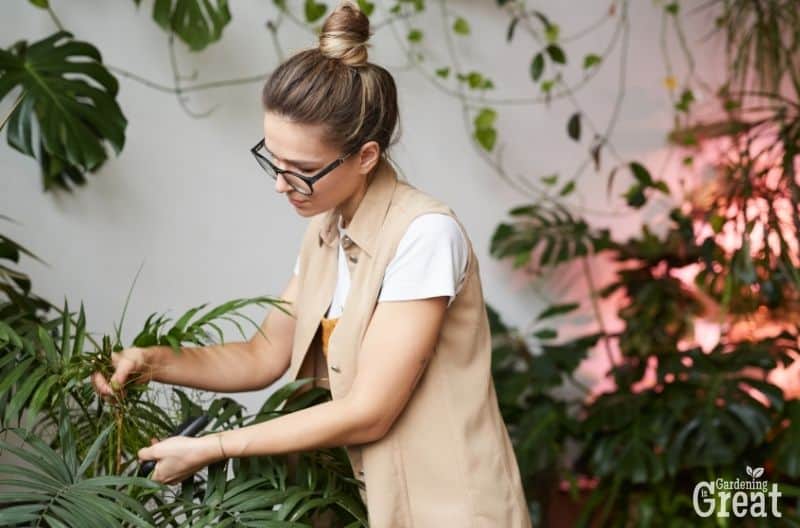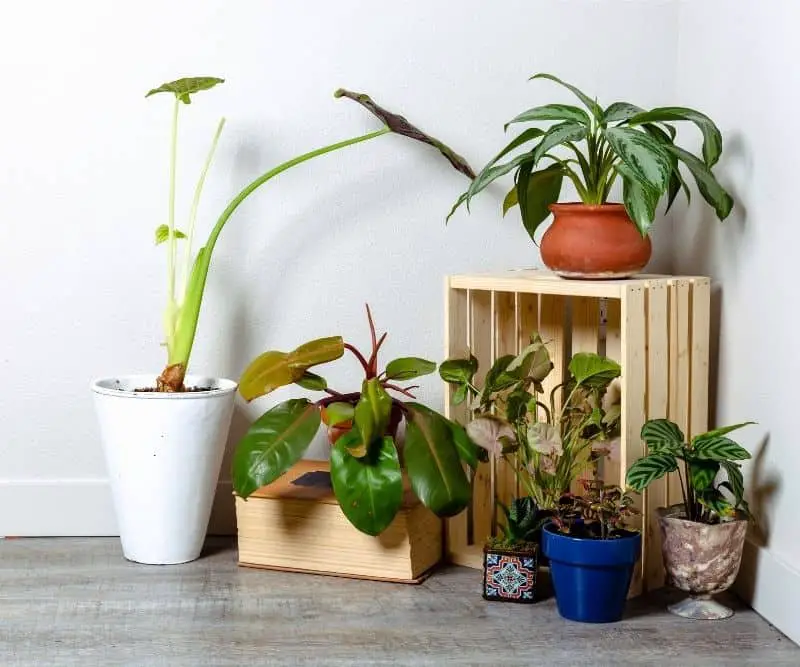First Time Plant Owner? Here are Some Helpful Tips to Keep in Mind
If you have finally taken the plunge and purchased your first real-life, non-Styrofoam plant, then huge kudos to you!
Now before you get carried away with purchasing tools, insecticides, and all the fun stuff, we’ve compiled a list of the most helpful tricks that will keep your plant nice and healthy and you from pulling at your hair.

Keep Plant Soil From Drying Out By Mixing In Organic or Garden Soil
The key thing to remember about the game of soil is this: moisture. Without it, you can see all your hard work slowly begin to shrivel up as the mix of temperature fluctuations, old potting soil, and dry air wreak havoc on your plants.
Should this be happening to you, try mixing your potting mix with organic or garden soil. Combining these ingredients will help retain more moisture and has a better drainage system than a stand-alone potting mix.
Stay Far Away From Plastic Potting Containers
No plastic! Although it is economical and convenient, plastic containers will do more damage in the long run than good.
Plastic containers, as opposed to metal or clay, rip and tear easily, retain high heat temps on hotter days (causing your plant’s P.H. to become thrown off), and don’t provide adequate drainage.
Start how you’d like to finish by investing in higher quality planters, and should your plants outgrow them, reuse them for cuttings and propagation.
Adding An Extra Layer Of Drainage To The Bottom Of Your Plant
Speaking of drainage, do you know about the paper towel method?
Used to prevent plants from compacting at the bottom and clogging the drain holes, placing a wet paper towel at the base of your pot can aid in keeping the excess water flowing without losing any soil in the process.
You Need To Have (And Keep) Neem Oil On Hand
Neem oil (if you’re not familiar) is an organic and biodegradable pesticide worth its weight in gold. Neem oil works by preventing insects from laying eggs and populating your plants by disrupting the hormones of the insects and stunts growth.
Because of its organic makeup, this pesticide is excellent for indoor use and works at keeping down several different pests.
Try Not To Move Your Plants All Over The Place
I wish more attention were paid to this. As lovely as it is to redecorate and get your feng shui on for fresh energy, your indoor plants struggle with the changes.
Once a plant is introduced to its habitat, it acclimates and conforms to the temperature range, humidity levels, and sunlight.

Something as simple as moving it from one side of the room to the other can have major repercussions, so think twice when redecorating to see if you can incorporate your ‘plant statue’ into the new Shui model.
Always Keep Your Pruning Shears Sharp!
Not much needs to be said here- sharp shears create clean cuts. Should your shears begin to dull after a while, take a sharpening stone and some sanding paper to revive those blunted blades.
Purchase A Soil P.H. Meter
Ditch the finger method and grab yourself a 3-in-1 Soil Meter.
This tool is especially handy for a busy plant parent as the soil P.H. meter is needed to insert the clean prongs into the soil and get an accurate assessment of your soil’s health.
Eggshells Are Your Friend
Listen up! Eggshells are a great way to fertilize your plant and make both the stalks and petals nice and strong.
You can either crush them up and add them to the soil, boil them down, and pour them into the soil, or place the shells at the very bottom of your pot when starting your planter.
If You’re Still On The Fence About Purchasing Your First Plant
We get it- plants can be tricky! And the newer you are to the process, the scarier it can be to make a decision.
To help make the choice easier, we’ve developed a handy system we like to call ‘O.A.S.I.S.’ to assist you from beginning to end in creating your garden.
Feel free to print out this section or save it in your notes as you work through these key areas:
O – Obtain Approvals
– We’re allowed to hang or attach permanent fixtures to balconies- yes or no?
– We’re allowed to have plants larger than 2 feet permanently in the outdoor area- yes or no?
– Plant species that are not allowed on the property are ___.
– We’re allowed to have oversized plant containers or garden beds in the outdoor area- yes or no?
– All those that my garden creation will impact have approved my project- yes or no?
– We’re allowed to have compost containers- yes or no?
– We’re allowed to store plant equipment and chemicals on the property- yes or no?
– I have double-checked that I have nothing hazardous within distance of my garden area that will be toxic to my plants- yes or no?
A – Assess Available Space
– I have enough room to comfortably have [insert number of plants] plants in my [insert name of indoor/outdoor area] area.
– I will store my garden tools, equipment, and chemicals ________.
– In my [insert name of indoor/outdoor area] area, I have a total of ___ sq. ft x ___ sq. ft to work with- with enough space for the plants to grow and expand.
S – Search, Collect, and Plan
– I have thoroughly researched the requirements on how to properly maintain the plants I want to buy- yes or no?
– I have read reviews of others who have cared for the type of plants I want to purchase and understand what is required- yes or no.
– I have researched where in my area (or online) I can purchase (or have shipped) my plants, tools, equipment, and chemicals- yes or no?
I – Install Garden System
– I have purchased the appropriate planters, potting soil/fertilizer, watering system, and draining containers, and it has been set up- yes or no?
– I have installed my garden in an area where my plants will receive an ample amount of light source, and away from areas that may be toxic to the plants and vice-versa- yes or no?
– If hanging my plants, I have securely installed my anchors and hook kit, and both can support the weight of my plant with water- yes or no?
S – Stay Optimistic
– I know patience is needed so that my plants can get acclimated to their new environment.
– If I get the urge to discard a plant that is not growing, I will research all problem areas and ask questions first before throwing my money away
– Gardening is a journey, and each day will be something new to learn about my garden
Keep these tips in mind as you go along your plant journey.
